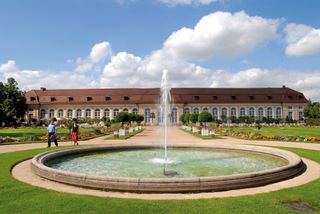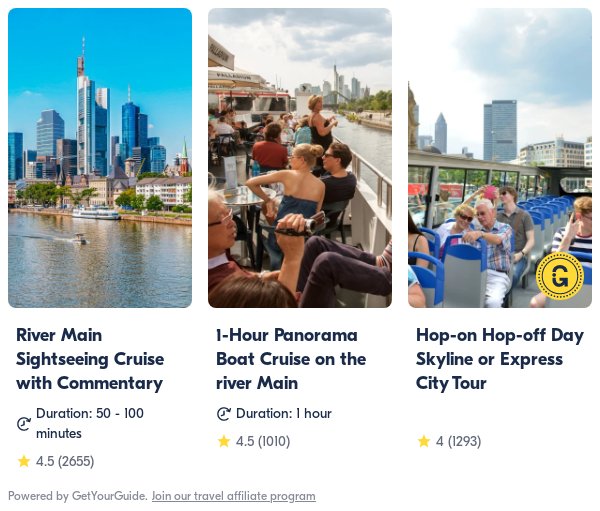Ansbach is a romantic town in Franken with a Baroque palace (Markgräfliche Residenz) and Hofgarten that remind of the links with the Hohenzollern-Brandenburg dynasty.

Ansbach in Romantic Franconia (Romantische Franken) is typified by Baroque palaces rather than medieval fortifications and half-timbered houses that dominate in other old town in the region. The main sights in Ansbach are the Baroque Markgräfliche Residenz (Margrave Residence Palace) and Hofgarten (Court Gardens), which are linked to the Hohenzollern family that ruled as kings of Prussia and emperors of the German Empire.
Ansbach’s history goes back to the foundation of a Benedictine monastery here in 748. In 1331, the area was bought by the burgrave of Nürnberg. From 1456 to 1791, Ansbach served as residence of the House of Brandenburg-Ansbach. Ansbach briefly belonged to Prussia before Napoleon Bonaparte awarded it to Bavaria in 1806. Since then, Ansbach has mostly been a Bavarian provincial backwater.
Ansbach Tourist Office
Amt für Kultur und Touristik Ansbach, Johann-Sebastian-Bach-Platz 1, tel 0981-51-243.
The Ansbach tourism office conducts guided town walks on Sunday at 11 am from May to September.
The Markgräfliche Residenz (Margrave Residence Palace), Ansbach
The main sight in Ansbach is the Markgräfliche Residenz (Margrave Residence), Promenade 27, tel 0981-953-8390, at the east of the old town. The margraves replaced the original moated castle with a Renaissance palace but then had it converted in the early 18th century into a glamorous Baroque palace. The architect was Gabriel de Gabrieli who used 21 windows and numerous statues to create a suitable palace for an absolute monarch.
The 27 rooms of the Margrave palace in Ansbach open to the public are some of the best examples of Rococo in Franken. In addition to the stuccowork, furniture, porcelain, and presentation rooms, around 50 painting from the 17th and 18th centuries including works by Rubens and Van Dyck are on display.
The interior of the Ansbach palace can only be seen on the compulsory guided tour starting on the full hour. Opening hours are Tuesday to Sunday from April to September from 9 am to 5 pm and October to March from 10 am to 3 pm. Admission is €4.
Ansbach’s Hohenzollern-Brandenburg-Prussian Connection
The House of Hohenzollern originated from Hechingen in Swabia in the 11th century. In 1192, the Hohenzollern took control through marriage of the Burgraviate of Nürnberg (Nuremberg). During the 14th century, it expanded territory through marriage and acquisition – notably the purchase of Ansbach (1331) and Kulmbach (1340).
The Hohenzollern family’s great leap forward came in 1411 when the Hohenzollern was awarded the Electorate Brandenburg and the Duchy of Prussia. Through partitioning the family would rule four basic areas: the rather insignificant Hohenzollern area in Swabia, Brandenburg-Ansbach and Brandenburg-Bayreuth in Franken, as well as Brandenburg itself, which would change into the Kingdom of Prussia (1701) and supply the three Kaisers of the unified German Empire (1871-1918).
The margraves of Brandenburg-Ansbach were generally benevolent and concentrated on construction and culture rather than war. The last margrave, Karl Alexander (1757-1791), had a long and successful reign, which saw him unifying Ansbach and Bayreuth. However, in 1791, after the death of his wife, he secretly sold his territories to Prussia, married an English woman (Lady Elizabeth Craven), unexpectedly abdicated, and spent the rest of his life until 1806 as private person breeding horses in England. In the same year, Napoleon took Ansbach away from Prussia and made it part of Bavaria.
The Hofgarten (Court Garden) in Ansbach, Bavaria
Rather uniquely, the Hofgarten (Court Garden) in Ansbach is not directly next to the Residenz but two blocks away. This large, Baroque park has as focal point a large Orangery constructed in 1743. It has 29 windows and is over 100 m/330 ft long.
The Orangery’s garden façade is modeled on the Grand Trianon in Versailles while the northern façade resembles the Louvre in Paris. Although heavily damaged during the Second World War, the Orangerie was restored soon afterward and is now used for concerts and receptions. To the east of the Orangery is a column marking the spot where Kaspar Hauser was stabbed – see Ansbach Culture.
The Ansbacher Hofgarten has both formal Baroque sections as well as more natural gardens. It is always open with free access.
More on Romantic Franconia:
- Romantic Franconia Overview
- Ansbach’s Baroque Residence and the Hohenzollern Connection
- Ansbach’s Old Town Sights
- Cultural Events in Ansbach & Kaspar Hauser
- Romanesque Church in Heilsbronn
- Colmberg Castle with Cheap Hotel & Restaurant
- Bad Windsheim – Open Air Museum, Spa, and Model Trains
- Open-Air Adventures in Romantic Franconia
- Hotels and Restaurants in Romantische Franken Towns





